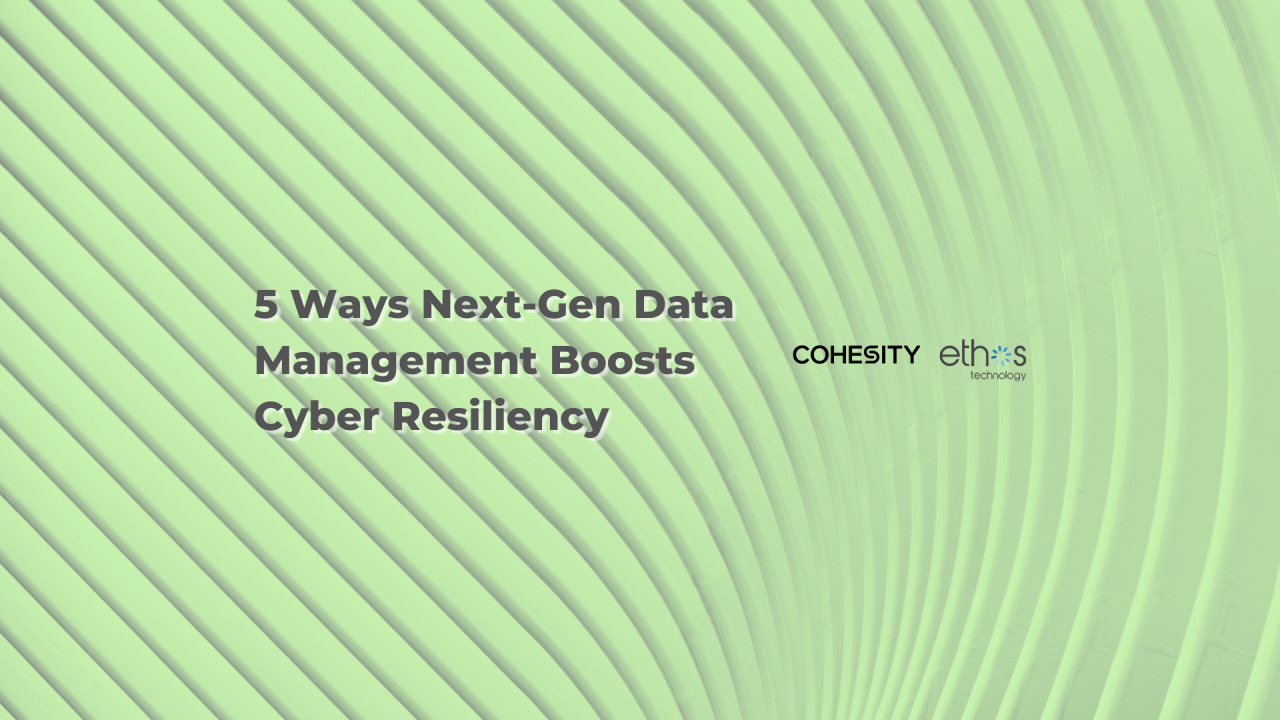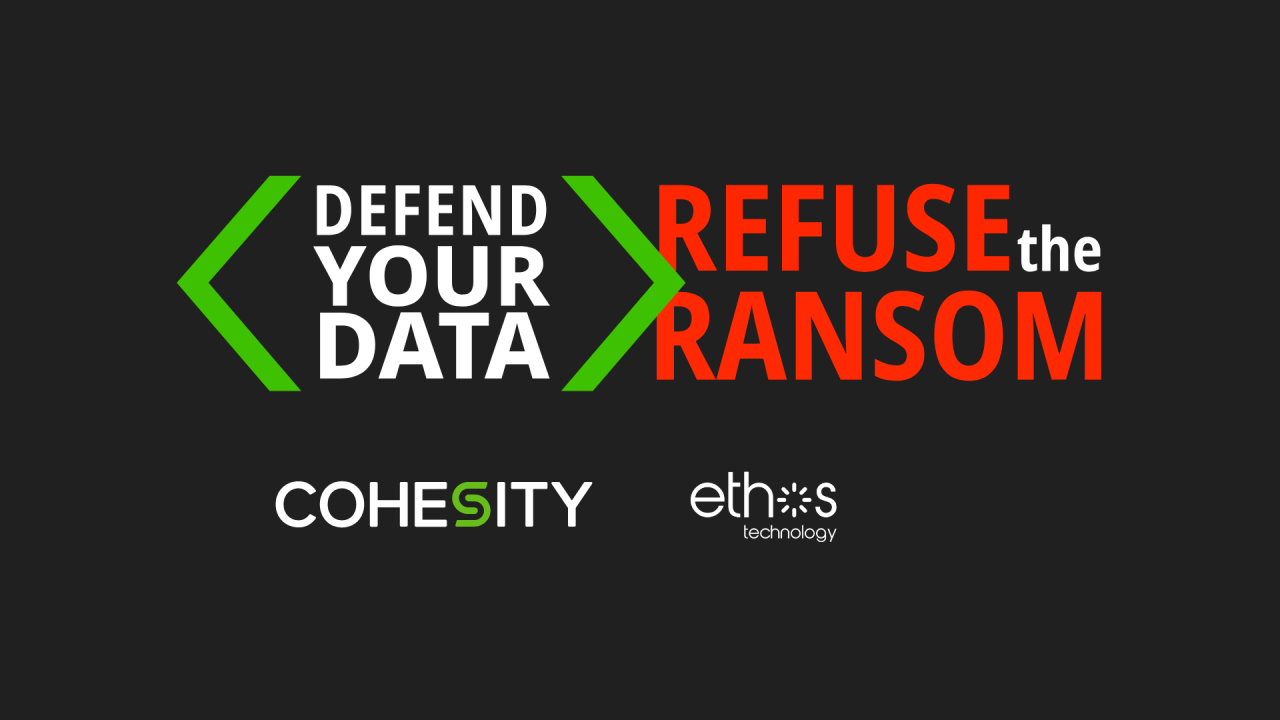Ethos Blog
Updates about the latest Tech News
A typical customer conversation...
In today’s blog I wanted to run you through a typical customer conversation that I’m sure many of you are familiar with.
Background:
Bloxham Mill provide serviced office solutions to over 200 UK based companies. They offer a broad portfolio of services and wanted to expand their DC offering to provide an infrastructure service to their clients.
The initial meeting between Ethos Technology and Bloxham Mill to identify their storage requirements started off as they often do:
Me: “How much data loss can you (and/or your clients) tolerate during a DR?”
Client: “Pretty much zero”
Me: “What performance do you need?”
Client: “Really fast to support some of the requirements, less fast for others”
Me: “How much storage do you need?”
Client: “A little bit to begin with but if things go well with the service, lots”
Me: “What storage protocols do you need to support”
Client: “Erm, all of them?”
Me: “What’s your budget?”
Client: Feels around pockets for loose change…
So, usual stuff then, it appeared the customer hadn’t got a clear understanding of the requirement so wanted ‘everything’ for ‘nothing’.
I say ‘appeared’ as my first impression did them a disservice.
In this era of public cloud my first thought was this could be a venture doomed to failure; however, in this case the client had identified that several of their customers had requirements where the likes of AWS just weren’t a good fit. They each had core legacy applications which weren’t going anywhere in a hurry; all had a requirement for the infrastructure to provide high availability and the storage layer zero data loss.
Customers included a Healthcare software provider, a Finance house and a Research institution.
This meant there was a requirement for synchronous data replication between two discrete DC locations which until recently had meant going down the SAN route (and $$$’s). Currently, the customers’ services are hosted in various places; either within their own core DCs or by other managed service/colocation providers.
To meet their prospective customer’s needs, the storage solution had to support virtual and bare-metal workloads; block, file and object protocols, directory integration, and offer secure multi-tenancy. Basically, they wanted a storage unicorn¹! Or so I’d have said a couple of years ago anyway…
Behold the wonderful world of Software Defined Storage (SDS). There are some awesome SDS solutions available now including VMware VSAN, Nutanix and Ceph, some of which even offer synchronous replication between data centres; until recently this was pretty much the sole playground of SAN. Each of the above solutions are fantastic at specific aspects of storage functionality; to fulfil all the requirements would need multiple solutions from one or more vendors.
In contrast, vNAS (and HV) from Compuverde meets all Bloxham Mill’s needs in a unified storage fabric which is capable of spanning multiple data centres.
We ran a Proof of Concept (PoC) to validate the solution for Bloxham Mill; initial testing was performed on two clusters of four nodes providing a combined capacity of 20TB. With this we were able to demonstrate key features including:
- Flexible scale-out capability; nodes were added to expand a cluster
- Emulated a metro cluster configuration with inter-cluster replication
- iSCSI and/or NFS Primary storage for bare-metal and VM hosts using multiple hypervisors; Hyper-V, KVM & VMware
- NFS and SMB file services
- S3 compliant object storage
- VMware integrated hyper-converged storage including live migration
- All flash and hybrid platform architectures
- High availability and data redundancy
To say the Compuverde passed with flying colours would be an understatement; incredibly this isn’t even a full list of available functionality!
The solution has now been implemented in Bloxham Mill’s primary data centre with initial customers using it for test and development workloads. Over the coming months, the secondary data centre will be brought on line facilitating the implementation of a metro cluster and along with it full DR capability; once in place customers will migrate production workloads onto the environment and enjoy significantly improved performance, availability and simplicity at a price point well below their existing services. Interest and initial feedback has been incredibly positive (to put it mildly!).
Using Compuverde we’ve built a storage foundation which is able to support the requirements of Bloxham Mill’s clients now whilst also providing the capability to evolve incrementally as future capacity and use case requirements dictate. We’ve been able to avoid many of the fundamental compromises which plague traditional approaches to storage with a solution which is incredibly simple to deploy, manage and maintain.
So, do unicorns exist? If you were to ask the pointed headed equine in the rack next to me if they’re purely the stuff of fairy tales, he’d tell you “neigh..!”
N.B. However reliable resiliency and data redundancy technologies are, they should always be supported by a robust data protection and archival strategy.
- Unicorn – a mythical creature that does not exist (at least until someone discovers one…)





